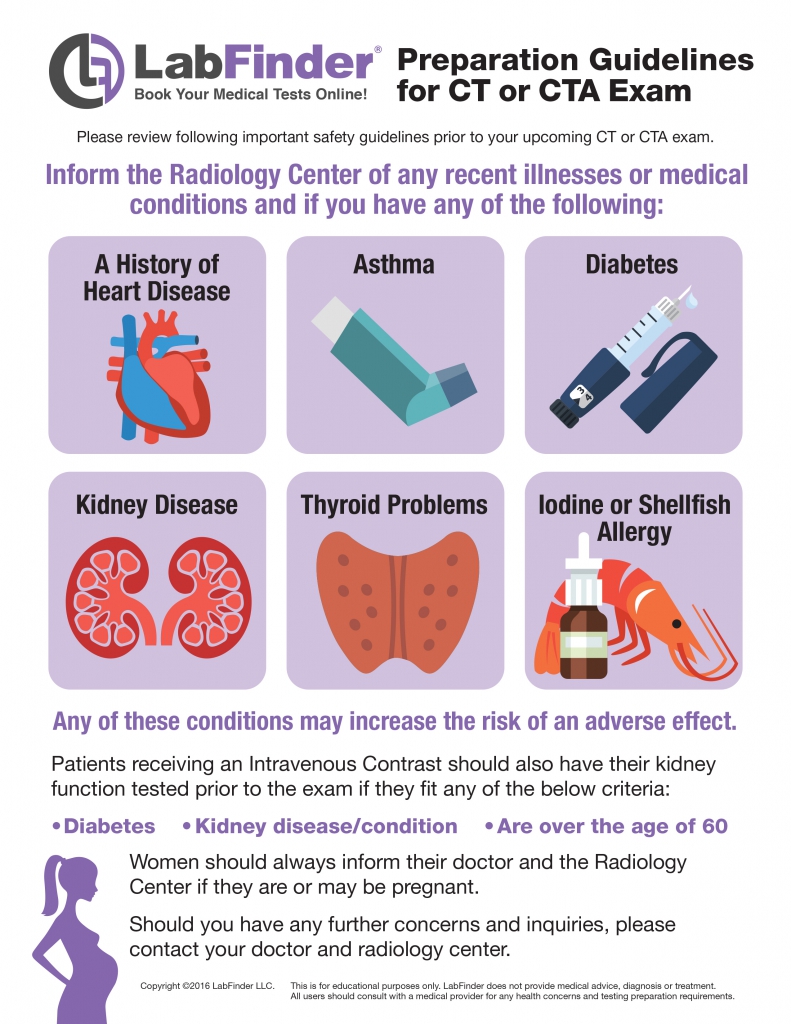SAVE 20% on your first doctor’s order order. Use code MM20 at cart
Thoracic Aorta/Chest CTA (Computed Tomography Angiography) is a specialized imaging test that combines the use of computed tomography (CT) and contrast dye to visualize the thoracic aorta and other blood vessels within the chest. This advanced diagnostic tool provides detailed images of the arteries and helps detect abnormalities such as aneurysms, dissections, and blockages. A CTA is a non-invasive and highly effective method for examining the vascular structures in the chest, offering crucial information for the diagnosis and management of various cardiovascular conditions.
The Thoracic Aorta/Chest CTA is suitable for a wide range of patients, including:
The Thoracic Aorta/Chest CTA can be performed in various clinical scenarios, such as:
The procedure for a Thoracic Aorta/Chest CTA involves several steps and typically takes about 30 to 60 minutes. Here’s an overview:
A Thoracic Aorta/Chest CTA can help diagnose and monitor a variety of conditions, including:
While a Thoracic Aorta/Chest CTA is generally safe, there are some risks and considerations:
To ensure accurate results and a smooth procedure, patients should follow these guidelines:
Other imaging tests can provide complementary or alternative information about the chest and vascular structures, including:
Booking a Thoracic Aorta/Chest CTA is simple and convenient with LabFinder. LabFinder connects you with participating labs and imaging centers near you that offer this essential diagnostic test. These centers often accept insurance, ensuring a smooth and hassle-free experience. With LabFinder, you can easily schedule your appointment online, select a location that suits your needs, and receive prompt and professional care.
In conclusion, a Thoracic Aorta/Chest CTA is a valuable diagnostic tool for evaluating and monitoring various conditions affecting the vascular structures in the chest. Understanding the purpose, procedure, and preparation for the test can help patients make informed decisions about their healthcare. Using LabFinder, you can conveniently book your CTA near your location, ensuring you receive the necessary diagnostic care without unnecessary delays.


The information on this page and throughout the LabFinder website and mobile app is for general informational purposes only. It is not intended to serve as medical advice, diagnosis, or treatment. For personalized medical advice or specific health concerns, please consult your healthcare provider directly.
Booking a Thoracic Aorta/Chest CTA is easy using LabFinder. Just choose your location and enter your insurance information to find the closest Thoracic Aorta/Chest CTA near you.
To make a same day appointment for a Thoracic Aorta/Chest CTA, just choose your location and your insurance information to find the closest Thoracic Aorta/Chest CTA location near you. If there's availability for a same-day appointment at a nearby lab location, then you will be able to book it easily through LabFinder.
LabFinder allows you to easily schedule a Thoracic Aorta/Chest CTA. You can search by location and insurance to easily book a Thoracic Aorta/Chest CTA near you.
LabFinder allows you to easily make an appointment for a Thoracic Aorta/Chest CTA online. To make an appointment for a Thoracic Aorta/Chest CTA online, just choose your location and your insurance information to find the closest Thoracic Aorta/Chest CTA near you.
Yes, you can get a Thoracic Aorta/Chest CTA without insurance. LabFinder allows you to search and select "Self-Pay" when booking a Thoracic Aorta/Chest CTA. While pricing for the test may not be immediately available, please check by calling the lab company directly for pricing.